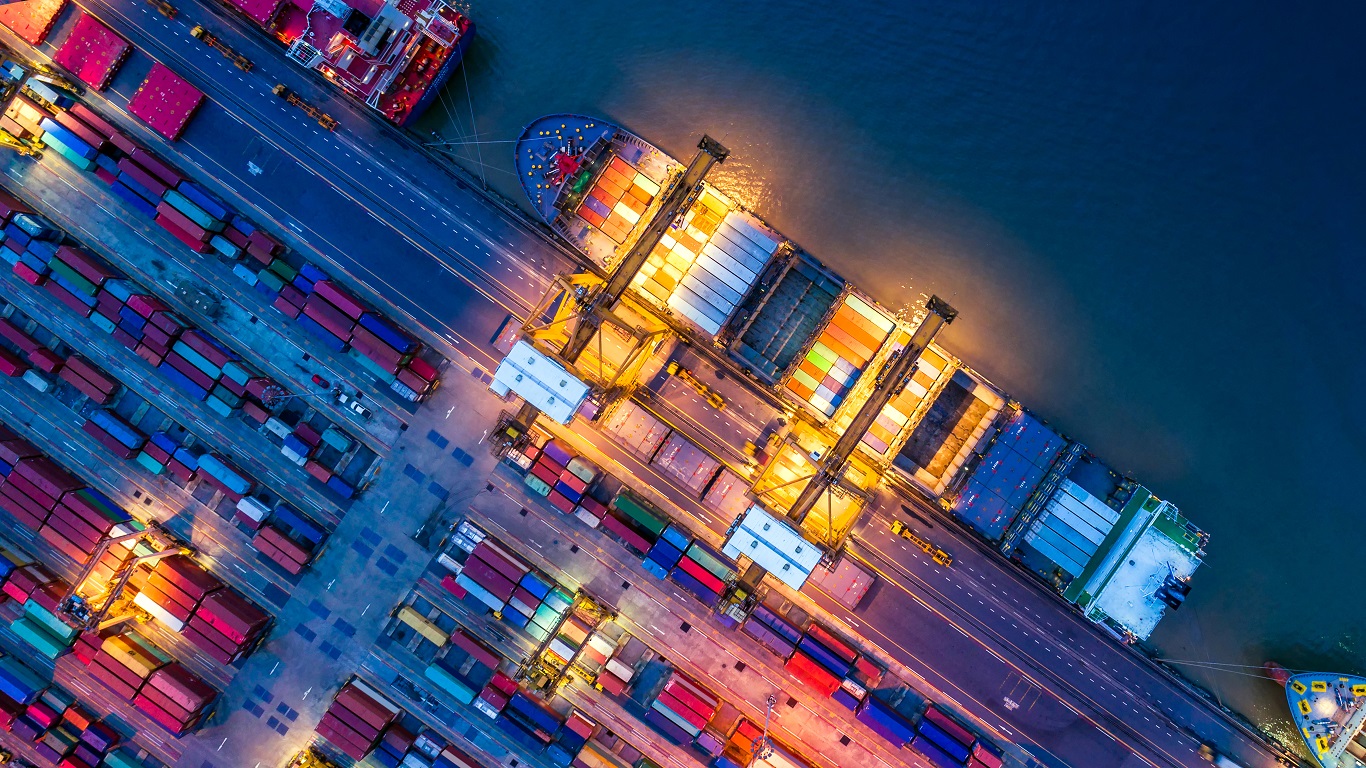EU's carbon border adjustment mechanism and its impact on Indian businesses
Published on 23rd August 2023
The European Union is pushing ahead with its aim of reaching net-zero emission by 2050. It has agreed to introduce first of its kind Carbon Border Adjustment Mechanism (“CBAM”) from 1 October 2023.[i] This will allow EU to charge tariffs on carbon intensive imports into EU from 2026.[ii] This is aimed at sectors such as iron and steel, cement, fertilisers, hydrocarbons, electricity and aluminium. In particular, exports of steel and aluminium from India will be impacted to the tune of around US $ 8 billion. UK, US, Japan and Canada may also levy similar import taxes.

What is CBAM?
CBAM is projected as a pioneering tool to encourage producers to reduce emissions embedded in industrial production of carbon intensive goods especially those entering EU from outside it. This is aimed to be achieved by putting a price on carbon emitted during the production outside EU. Consequently, CBAM will equalise the price of carbon between domestic and imported products in the affected sectors. .
Why is CBAM being introduced?
Climate change has for long been recognised as a global challenge. To address it, in the last decade global instruments like the Paris Agreement in 2015 [iii], Glasgow Climate Pact in 2021[iv], and most recently the ‘European Green Deal’ have been adopted.[v] Despite substantial reduction in the EU’s greenhouse gas (“GHG”) emissions, those embedded in imports to the EU have been increasing, thereby undermining its efforts. This is because state capacities to tackle with this challenge differ resulting in less stringent climate laws in certain parts of the world vis-à-vis EU. This had led to EU companies moving their carbon intensive production to countries with less stringent policies resulting in ‘carbon leakage’.
One of the existing mechanisms for addressing the risk of carbon leakage is the ‘EU ETS’, it works on the 'cap and trade' principle to installations in the EU. Under this system, EU puts a cap on the total amount of GHGs which can be emitted, and this cap is reduced overtime. Within the cap, operators buy or receive emissions allowances, which they can trade with one another as needed. This system of free allowances was considered insufficient since such free allocation weakens the price signal that the system provides and weakened the incentives to reduce emissions domestically.
CBAM aims to change this by allowing to charge for the carbon produced outside EU, creating a level playing field, ensuring the prices of import are not cheaper than that of local EU production.
What steps does the Regulation envisage?
CBAM should apply to goods imported into the customs territory of the EU from third countries, except where their production has already been subject to the EU ETS through its application to third countries or territories or to a carbon pricing system that is fully linked with the EU ETS.
The EU importers covered by this regulation will need to register with national authorities where they can buy CBAM certificates for a price. When the importer declares emissions imbedded in its import, it will need to surrender corresponding number of certificates each year. If the carbon price has already been paid at the place of production, the EU importer can seek set off the corresponding amount.
When does it come into force?
The CBAM regulation has officially entered into force with its publication in the Official Journal of the EU on 16 May 2023. As on 1 October 2023, the transitional period for CBAM will commence, with the first reporting period for importers ending 31 January 2024. During the transitional period, the importer shall submit a CBAM report on a quarterly basis which must contain details such as total quantity of each type of goods, total embedded emissions, carbon price due/paid in the country of origin. The permanent system kicks in from 1 January 2026.
What will change for the concerned Indian businesses?
As per a Chatham House study[vi] on countries that are most exposed to the EU’s proposed carbon tariffs, India features in the top 8 affected countries. In 2022-2023, EU accounted for 16.59%[vii] of India’s exports, with base metals and articles accounting for approximately 9.6% of exports from India. However, it seems that most impacted industries will be steel and cement, while for the rest impact may be minimal.[viii] It is also reported that 26.4 per cent of India’s exports of products are potentially covered by CBAM.[ix] As per a recent ICRA report, the profits from Indian steel exports to EU may fall by US $ 65-160/MT between the year 2026 to 2036 due to CBAM compliance requirements.[x]
Considering this, it is reported[xi] that the Indian government is considering filing a complaint to the WTO against CBAM claiming it to be a trade barrier and would seek relief for its exporters, particularly small companies. While that takes its own course, the Indian businesses may be impacted at least in the following ways:
CBAM is made with objective that the carbon price is equivalent for imports and domestic products. This has the potential to severely impact the price advantage of Indian businesses. Some reports suggest CBAM will translate into a 20-35 per cent tax on steel, aluminium and cement imports into the EU starting January 1, 2026, that currently attract a duty of less than 3%.Despite the lower per capita emissions by India, CBAM may result in lower demand which would ultimately lead to trade diversion from India and may cause business disruptions until Indian industry takes steps to reduce the carbon emissions and improves on technology.
During the transition period, the importers of carbon intensive goods under this Regulation will have to report GHG e.g. carbon dioxide (‘CO2’) as well as, where relevant, nitrous oxide and perfluorocarbons) embedded in their imports (both direct and indirect emissions), without making any financial payments or adjustments. Here indirect emissions mean emissions arising from the generation of electricity used to produce the goods to which CBAM applies. From 1 January 2026, the importers shall be required to declare each year the quantity of goods imported into the EU in the preceding year and their embedded GHG. The Indian businesses exporting carbon intensive goods to EU will be asked by the EU importing partners for this data. At present India does not have standardised guidelines to measure GHG released while producing exported goods. India is making policies for the purpose albeit at a slow pace. With recent guidelines and circulars like Business and sustainability reporting, and guidelines for ESG credit rating agencies, it seems India will have to introduce specific guidelines to measure the carbon footprint for each raw material and service used in manufacturing and incentivise to reduce the carbon footprint gradually.
Other advanced economies such as US, UK, Japan may follow suit in order to align themselves with the global carbon reduction goals. It is relevant to point out that an important country for Indian businesses i.e. UK has very recently in a surprise move watered down the UK ETS, which was set up post Brexit to mirror the EU ETS. As a result of this, carbon prices are trading at a steep discount compared with those in Europe. Indian businesses may note that this may bring short-term benefits to energy-intensive industries.[xii]
The affected Indian businesses may also face the practical difficulties associated with increased compliance and reporting requirements for which a number of mechanisms will need to be in place. Needless to say, Indian businesses will also have to think critically about incorporating technologies in their production processes that are more efficient in reducing greenhouse gases.
India is also taking market based approach to incentivize voluntary environment actions by all stakeholders. In its efforts to combat climate change, India has recently on June 26, 2023 notified draft Green Credit Programme Implementation Rules, 2023[xiii] for public comments. These rules inter alia aim to create a market-based mechanism for providing tradable incentives in the form of green credits to individuals, farmer producer organisations, cooperatives, forestry enterprises, sustainable agriculture enterprises, urban and rural local bodies, private sectors, industries and organisations for environment positive actions. Though it remains to be seen how such carbon pricing system is linked with EU ETS so as to allow businesses to seek exemption from CBAM.
Apart from this, Securities and Exchange Board of India (SEBI), India’s securities market regulator, had introduced business responsibility and sustainability reporting (BRSR) for top companies.[xiv] BRSR provides for nine major ESG attributes to guide disclosures. Since ESG ratings and classification space was unclear till now, SEBI recently introduced guidelines in its recent master circular for ESG rating providers. This will streamline and standardise the parameters of ratings. Most notable aspect of circular is Parivartan score (core transition), rewarding progress with absolute status in ESG ratings. This progress based reward will help Indian exporters to reduce their carbon footprint and commitment to achieve net zero.
Resources
[i] Regulation (EU) 2023/955 of the European Parliament and of the Council
[ii] https://www.europarl.europa.eu/thinktank/en/document/EPRS_BRI(2022)698889 accessed on 26 July 2023.
[iii] The Parties to the Paris Agreement have agreed to hold the increase in the global average temperature well below 2°c above pre-industrial levels and to pursue efforts to limit the temperature increase to 1.5°c above pre-industrial levels.
[iv] Under the Glasgow Climate Pact, adopted on 13 November 2021, the Conference of the Parties to the UNFCCC, also recognised that limiting the increase in the global average temperature to 1.5°c above pre-industrial levels would significantly reduce the risks and impacts of climate change.
[v] EU Commission’s communication of 11 December 2019 entitled ‘The European Green Deal’ with an aim to ensure no net greenhouse gas emissions by 2050.
[vi] https://resourcetrade.earth/publications/which-countries-are-most-exposed-to-the-eus-proposed-carbon-tariffs . This is based on the data from the United Nations (UN) Comtrade database and taking an annual average from 2015-2019.
[vii] https://tradestat.commerce.gov.in/eidb/default.asp accessed on 31 July 2023.
[viii] https://webgate.ec.europa.eu/isdb_results/factsheets/country/details_india_en.pdf accessed on 31 July 2023.
[ix] https://indianexpress.com/article/opinion/columns/on-carbon-burden-europes-glaring-hypocrisy-8862076/ accessed on 27 July 2023.
[x] https://www.icraresearch.in/Research/ViewResearchReport/5100 accessed on 17 August 2023.
[xi] https://www.reuters.com/world/india/india-plans-challenge-eu-carbon-tax-wto-sources-2023-05-16/ accessed on 31 July 2023.
[xii] https://www.ft.com/content/dfa3b6dc-e00c-4d9a-b155-a419845a39e4 accessed on 31 July 2023.
[xiii] https://moef.gov.in/wp-content/uploads/2023/06/Draft-GCP-Notification-Inviting-Comments-27062023.pdf accessed on 31 July 2023.
[xiv] https://www.sebi.gov.in/legal/master-circulars/jul-2023/master-circular-for-esg-rating-providers-erps-_73856.html accessed on 31 July 2023.
*This article has been co-authored along with Parveen Arora, Partner and Suruchi Kotoky, Principal Associate (BTG Legal, India) with inputs from Matt Lewy, Partner, Osborne Clarke, London



